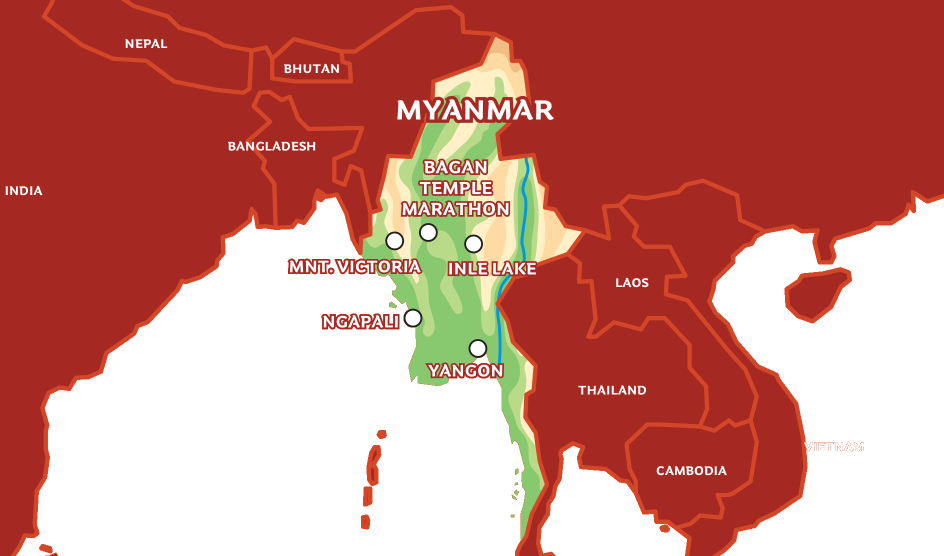Bagan, a locale of sublime ethereal beauty, finds itself cradled along the banks of the Irrawaddy River in Myanmar. As you embark on your journey to this temple city, prepare for an adventure that transcends the confines of mere tourism. Instead, you’ll find a profound opportunity to connect with history, spirituality, and the craftsmanship of a nature and culture intertwined. To ease your exploration, a thorough understanding of Bagan’s temple complex layout is indispensable. With this map, both metaphorical and literal, we’re setting the stage for what promises to be an unforgettable expedition.
Consider the vastness of Bagan’s landscape: it boasts over 2,000 ancient stupas and temples, remnants of a golden era that dates back to the 9th century when Bagan was the capital of the Pagan Kingdom. Each edifice tells a tantalizing tale, steeped in the ambitions and devotion of those who once walked these grounds. But even more than the storied past, what truly captivates is the choreography of these monumental structures against the backdrop of a pastel-hued sky at dusk. This is where the map comes into play; it guides your gaze, helping you discover hidden gems that are often overlooked.
As you set your sights on the map of Bagan, you’re not merely studying geographical placements but are preparing to navigate through time. The temples of Bagan can essentially be categorized into three clusters: the Old Bagan, New Bagan, and Nyaung U. Each area holds its own charm, with unique constructions and cultural significance.
Starting with Old Bagan, this district is often regarded as the heart of the temple complex. Here, you’ll uncover the iconic Ananda Temple, with its stunning structure and remarkable preservation, boasting a collection of four standing Buddha images that seem to beckon visitors with tranquility. The thought of being surrounded by such historical gravitas can transform your perception of time—it’s as if you’ve stepped into a tableau where each stone is a whisper from a bygone era. The shadow of the setting sun casts a golden luminescence against these ancient relics, enhancing their celestial allure.
Adjacent to Old Bagan lies New Bagan, significantly different in its architectural composition, marked by modern establishments and quieter ambiance. While it might lack the overwhelming historical density of its older counterpart, it is here that you will find a plethora of accommodations and eateries, offering a more contemporary comfort. Yet, even within this modernity, traditional elements persist, reminding you of the rich heritage that encircles you.
To delve deeper into Bagan’s temple legacy, a careful exploration of Nyaung U is imperative. This area showcases the hustle and bustle of local life, serving as a hub for traditional markets and community interactions. The Htilominlo Temple, the largest and most ornate in this region, commands attention. Its vertical height juxtaposed against the flat plains of Bagan is striking. Here, visitors often pause to contemplate the intricate carvings and the profound sense of devotion that those who built it must have had.
What can enhance your exploration further is the exhilarating choice of transportation. While electric bicycles and horse-drawn carts are popular options, consider climbing atop a hot air balloon for a bird’s-eye view. This choice offers an entirely new dimension, allowing you to appreciate the intricate patterns of the temples sprawled beneath you like a mesmerizing quilt. Nothing quite prepares you for the breathtaking vista that unfolds as the sun peeks over the horizon, illuminating a landscape that is as majestic as it is mystical.
As you weave through the landscape, each visit to a specific temple should provoke wonder and introspection. Don’t miss out on the Sulamani Temple, known for its remarkable glazed terracotta motifs and serene atmosphere—the feeling of standing before its sheer beauty is an experience unto itself. It’s a call to connect, to become a part of the narrative that has seen centuries pass through its corridors. Reflecting upon each moment can shift your perspective: from a mere observer to a participant in the ongoing story of Bagan.
The deeper elements of Bagan extend beyond the architectural. The spiritual ambiance envelops you, especially during the early morning hours, when devotees gather for rituals and meditation. The subtle fragrance of incense dances through the air, blending with the sound of soft chants. These moments encapsulate the timeless aspect of Bagan, enriching your experience and fostering a unique connection with both past and present.
To truly immerse yourself in this coastal tapestry, one must embrace the local culture. Engage with artisans, share a meal with locals, or partake in community events. This involvement offers a narrative layer to your temples’ journey and instills a profound appreciation for the skills and traditions that have withstood the test of time.
In conclusion, exploring Bagan is not just about visiting sites; it’s about grappling with the weight of centuries of history, engaging with spiritual practices, and savoring the breathtaking vistas that change with every passing hour. With a map in hand, traverse this magical temple city and redefine your understanding of travel. Allow curiosity to lead you through these ancient corridors and into the heartbeats of those who once roamed them, promising a shift in your own perspective on this mesmerizing sanctuary of spirit and stone.
